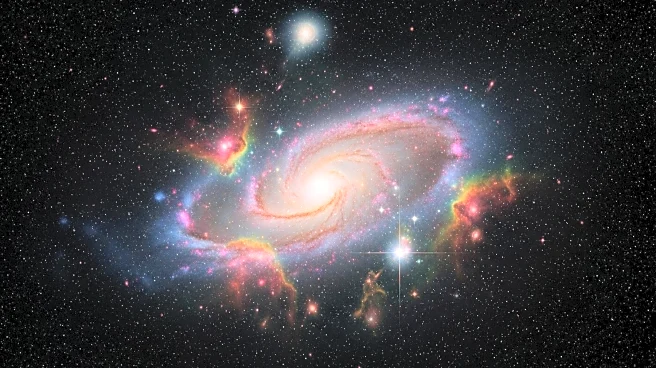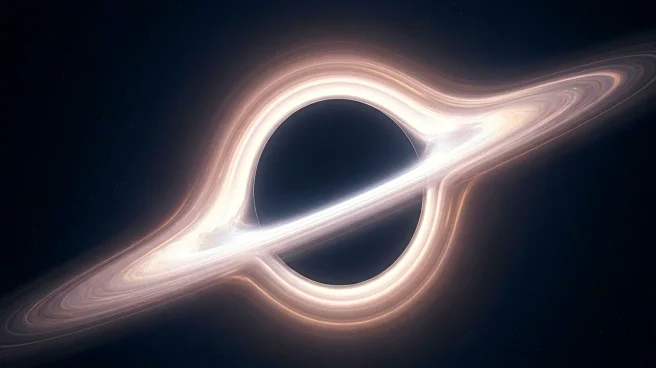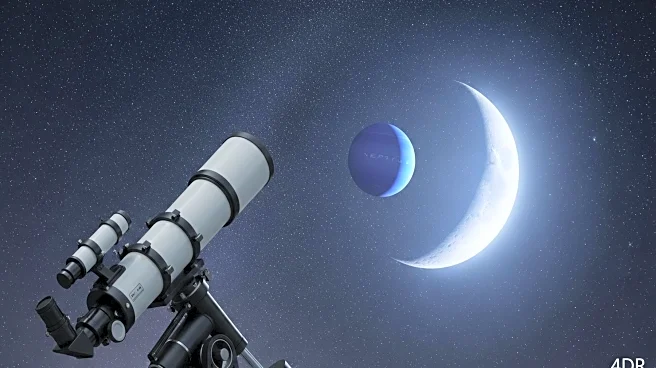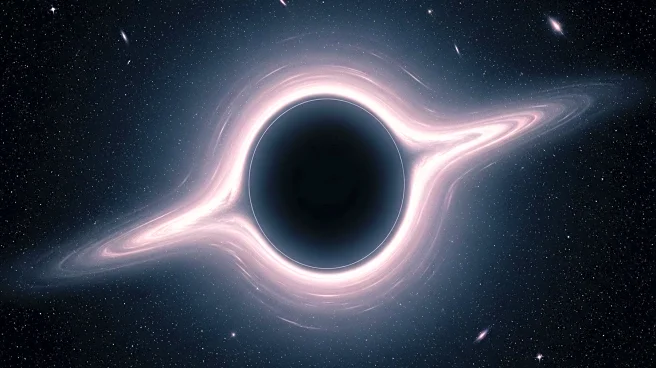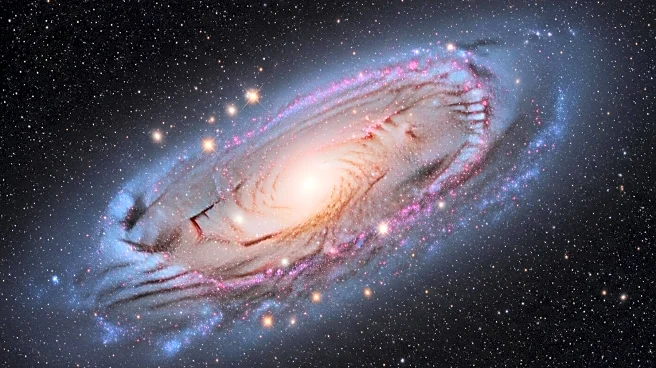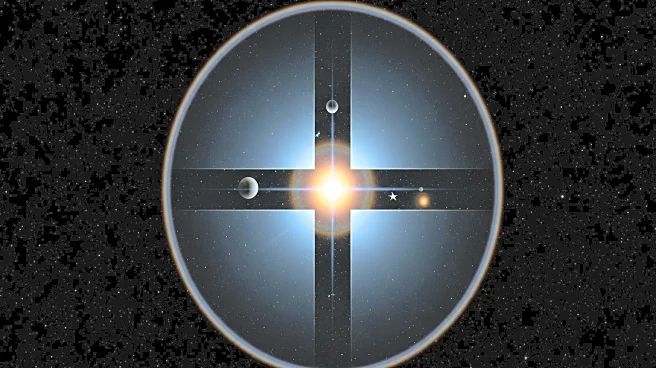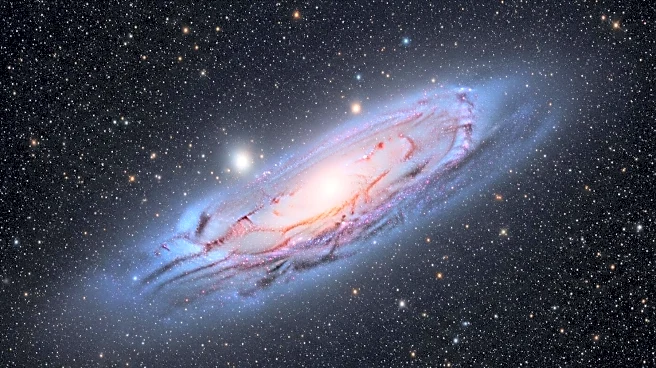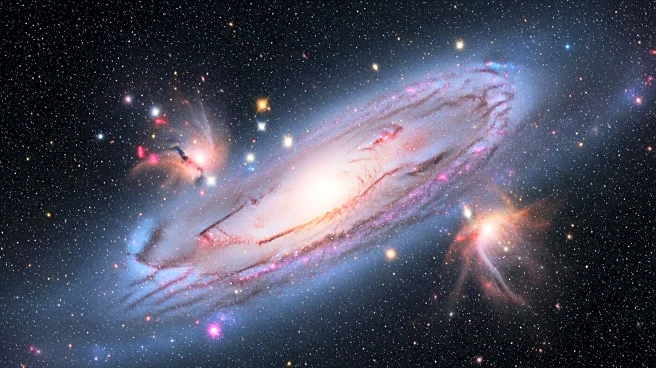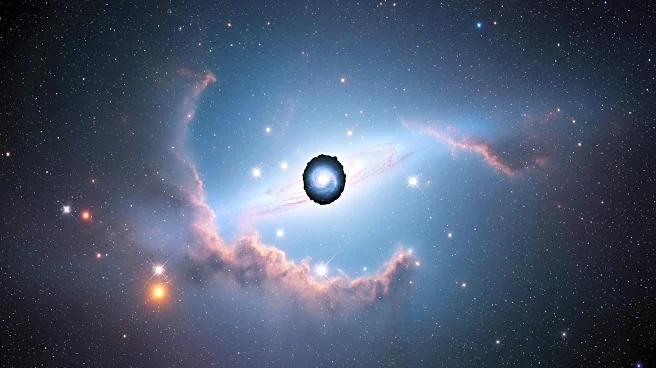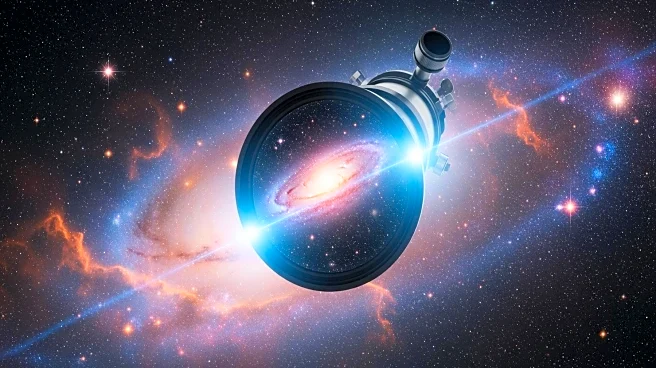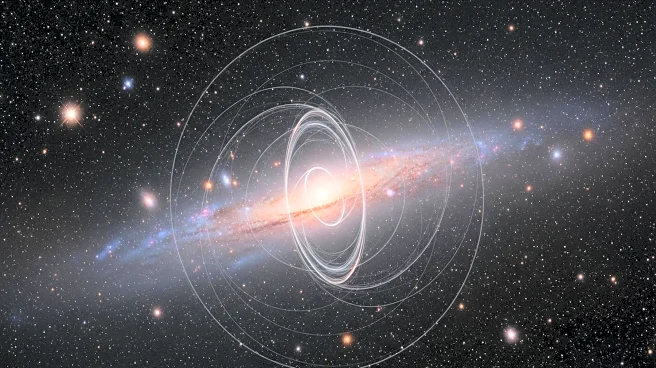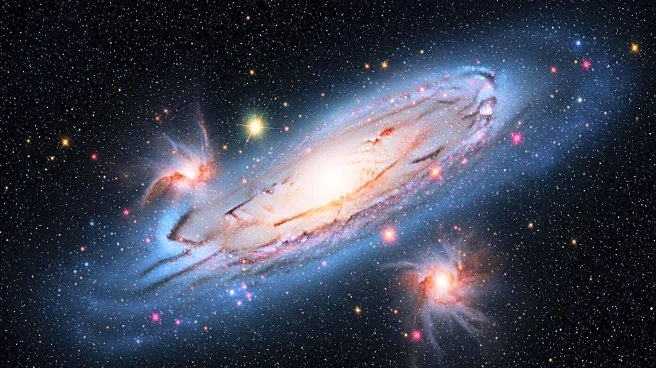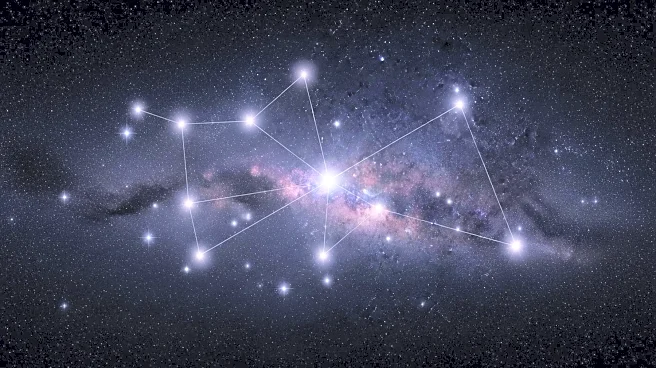What is the story about?
What's Happening?
The Hubble Space Telescope has captured a new image of the spiral galaxy Messier 96, located 35 million light-years away in the constellation Leo. This image reveals a ring of star formation in the galaxy's outskirts, surrounded by bubbles of pink gas. The asymmetric appearance of Messier 96 may be due to gravitational interactions with neighboring galaxies, affecting its distribution of gas and dust.
Why It's Important?
Understanding star formation processes in galaxies like Messier 96 provides insights into the dynamics of galactic evolution and the role of gravitational forces in shaping galaxies. This knowledge is crucial for astrophysics and can inform models of galaxy formation and behavior.
What's Next?
The new data from Hubble will be used to study how stars are born within giant dusty gas clouds and how they affect their environments. Future observations may focus on the interactions between Messier 96 and its galactic neighbors to further understand its asymmetric structure.
Beyond the Headlines
The study of star formation in galaxies contributes to our understanding of the universe's history and the conditions necessary for life. Observations like these help refine theories about the lifecycle of stars and the evolution of galaxies.
AI Generated Content
Do you find this article useful?
